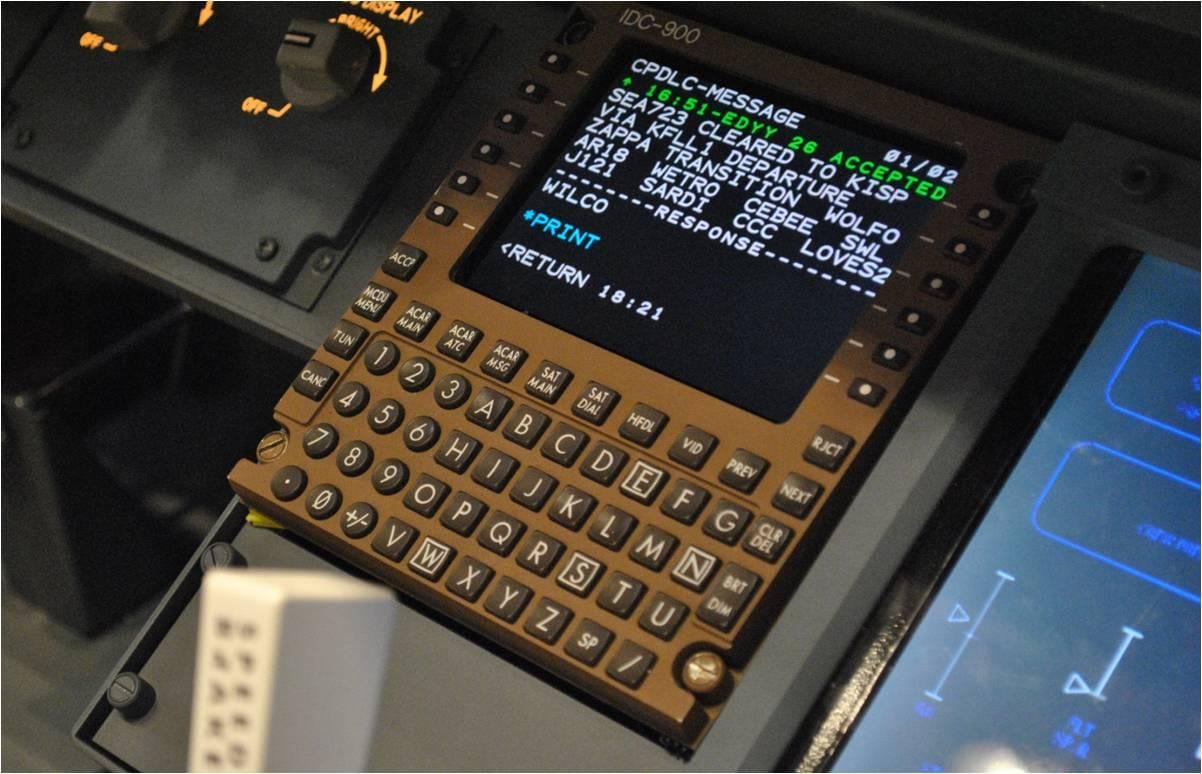
Business jet operators as well as manufacturers like the FAA’s Data Communications (Data Comm) system, which enables controllers to send departure clearances to pilots by text instead of by radio.
The FAA has deployed the capability for text messaging to 62 airport towers and is in the process of rolling it out to 20 air route traffic control centers (ARTCC) that manage high-altitude, enroute traffic. After outfitting three “key” ARTCCs—Washington, Indianapolis and Kansas City—the agency suspended deployment to the enroute centers in 2020 because of the COVID-19 pandemic.
To send and receive Data Comm messages, aircraft must be equipped with Future Air Navigation System (FANS) 1/A controller-pilot data link communications (CPDLC), transmitted by VHF Data Link Mode 2 radios.
Embraer Executive Jets is supporting Data Comm enroute flight trials, said Ricardo Carvalhal, the manufacturer’s director of sales engineering. “As an OEM, we are very bullish about the technology,” Carvalhal said Feb. 24 during a presentation at the virtual NBAA Go Flight Operations Conference. “We are full-throttle with the enroute phase; in fact, we are actively inviting customers to be part of the exercise.”
Operators appearing with Carvalhal during the Embraer-focused “Future Proofing Your Flight Department” presentation concurred with his assessment of Data Comm, which has also received good reviews from airlines.
“Our new [Embraer] Praetor 600 is my first experience with CPDLC and using the ‘DCL’ digital clearance function of it,” said Paul Kohler, chief pilot with energy and infrastructure contractor Michels Corp., in Fond du Lac, Wisconsin.
“We go to many of those 62 airports often, one of them quite often,” Kohler related. “We have started the process of being approved for the enroute phase. It’s terrific—there is no talking to ATC. You get your clearances right through a key pad. It frees up that frequency and keeps the pilots involved with what they should be doing instead of talking on the radio all the time.”

Kohler also appreciates the Praetor 600’s fly-by-wire (FBW) flight controls. Embraer introduced the super-midsize Praetor 600, an upgrade of the Legacy 500, at the 2018 NBAA Convention. It improves on its FBW predecessor with new winglets, additional fuel capacity, and more powerful Honeywell HTF7500E engines.
“When we were looking to replace our Legacy 500s, we started to look at other options out there,” said Kohler. “I can tell you that there was not going to be an airplane [for us] that wasn’t fly-by-wire because we had just fallen in love with that technology. Working with it, you just realize how much safety it brings to the cockpit. We love the system on our Legacies and our Praetor.”
Similarly impressed with FBW flight control is Ben Walton, president of aircraft management, sales, charter and training company Summit Aviation, of Belgrade, Montana. “We have one Praetor 600 and that’s the only aircraft that we have that is fly-by-wire,” said Walton. “Our experience has been very positive. Like most technologies, as it improves and the cost starts to go down, I could see this someday on even our smaller training aircraft.”
Walton shared that one of Summit’s customers was interested in buying a Praetor 600, but had not previously flown a FBW aircraft. “We recently did a pilot demo. Of course, there’s always somebody who has never flown it before and is skeptical,” he said. “They did the pilot demo and they both came back and were just blown away by the redundancy, the safety, how comfortable they felt in the airplane. They converted immediately after the flight.”

Operators remain undecided on the cost versus benefit of installing Gogo air-to-ground or satellite communications for inflight connectivity (IFC) in the cabin. In November 2019, Viasat announced that it had received supplemental type certification from the FAA, EASA and Brazil’s ANAC for its Ka-band IFC system on the Praetor 600. It requires installation of Viasat’s Global Aero Terminal 5510.
“We’re adding an aircraft and trying to make the decision between Gogo—because we’re flying in the U.S. most of the time—and Ka-band,” said Walton. “It’s difficult to navigate because we don’t know what the costs are going to be down the road. We’d like to see faster speeds and lower costs, obviously.”
Kohler said his flight department sold a Legacy 500 and acquired a Praetor 600 with Ka-band connectivity in December. “It’s been from a performance standpoint just phenomenal, near home [internet] speeds,” he said.
“I’ve seen some download speeds in the 30-40 Mbps range. It’s vastly superior to Gogo and there’s no outages, as long as you are in the continental U.S.,” Kohler added. “All of that performance, though, of course, comes with cost. It’s a fair amount more expensive and it’s an expensive technology to add. When you hear how it works and some of the things they have coming in technology, it’s very impressive, but at a premium cost. I wish it was more cost-effective to install and operate.”



